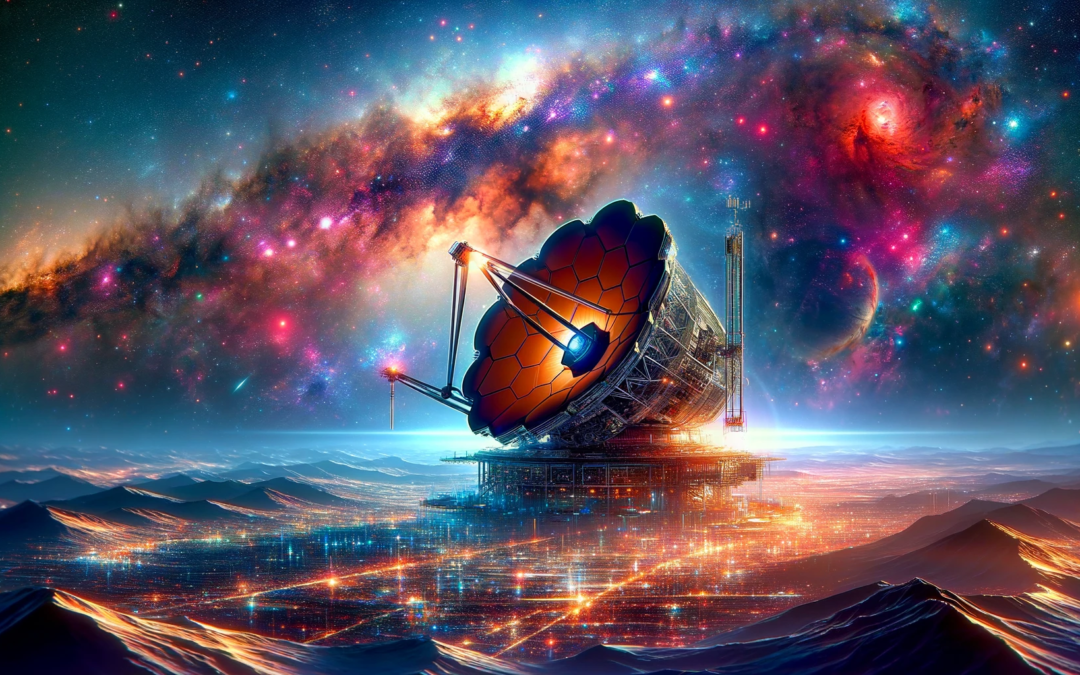In the vast, silent expanse of the cosmos, where stars are born and galaxies spiral in a dance older than time, a new chapter in our understanding of the universe unfolds. The James Webb Space Telescope (JWST), a marvel of human ingenuity and a testament to our enduring quest for knowledge, has made a discovery that redefines the boundaries of our cosmic curiosity.
Far beyond the familiar constellations, past the shimmering veil of the Milky Way, a staggering 7 trillion miles from our blue and green orb, JWST has captured what appears to be the glimmer of city lights. This revelation, akin to a siren’s call from the depths of space, beckons us with questions that touch the very essence of our existence. Are we truly alone in this vast universe, or do these distant lights signify the presence of others, gazing back at us across the cosmic sea?
The Discovery: A Glimpse of Distant Lights
The JWST, with its unprecedented resolution and sensitivity, has brought into focus a cluster of lights on an exoplanet orbiting a star in a galaxy far from our own. These lights, unlike any celestial phenomenon known to us, exhibit patterns and variations that strikingly resemble the nighttime glow of a bustling city on Earth.
The Implications: Rethinking Our Place in the Universe
This discovery, if confirmed as evidence of extraterrestrial civilization, would be the most monumental in human history. It would not only affirm the existence of other intelligent life but also offer a profound and humbling insight into our place in the universe. The philosophical, religious, and scientific ramifications are immense, opening a Pandora’s box of existential inquiries and debates.
The Analysis: A Scientific Odyssey
Astronomers and scientists across the globe are now engaged in a rigorous analysis of this data. The JWST’s instruments, including its near-infrared camera and spectrograph, are being pushed to their limits to decipher the nature of these distant lights. The questions are many: Are these light patterns consistent with known natural phenomena, or do they unmistakably indicate the presence of an advanced civilization? What can we infer about their society, technology, and understanding of the cosmos?
The Skepticism: A Cautionary Note
Amidst the excitement, there remains a healthy dose of skepticism. History reminds us of past false alarms in the search for extraterrestrial intelligence, from pulsars initially thought to be alien signals to the recent ‘Oumuamua’ object that stirred speculation but was ultimately deemed a natural asteroid.
The Future: Dawn of a New Era
As we stand on the brink of potentially redefining our understanding of life in the universe, the role of technology like the JWST becomes ever more crucial. Future missions, possibly involving even more advanced telescopes and interstellar probes, may one day unravel the mystery of these distant lights.
The Dream: A Unified Human Quest
This discovery transcends national, cultural, and ideological divides, uniting humanity in a shared quest for answers. It is a testament to our unyielding spirit of exploration, a beacon of hope in our collective journey through the stars. As we ponder the nature of these distant lights, we are reminded of our enduring fascination with the night sky, a canvas upon which we have painted our fears, dreams, and aspirations for millennia. In the silent whispers of the cosmos, we find not only answers to our greatest questions but also a reflection of our deepest selves.










